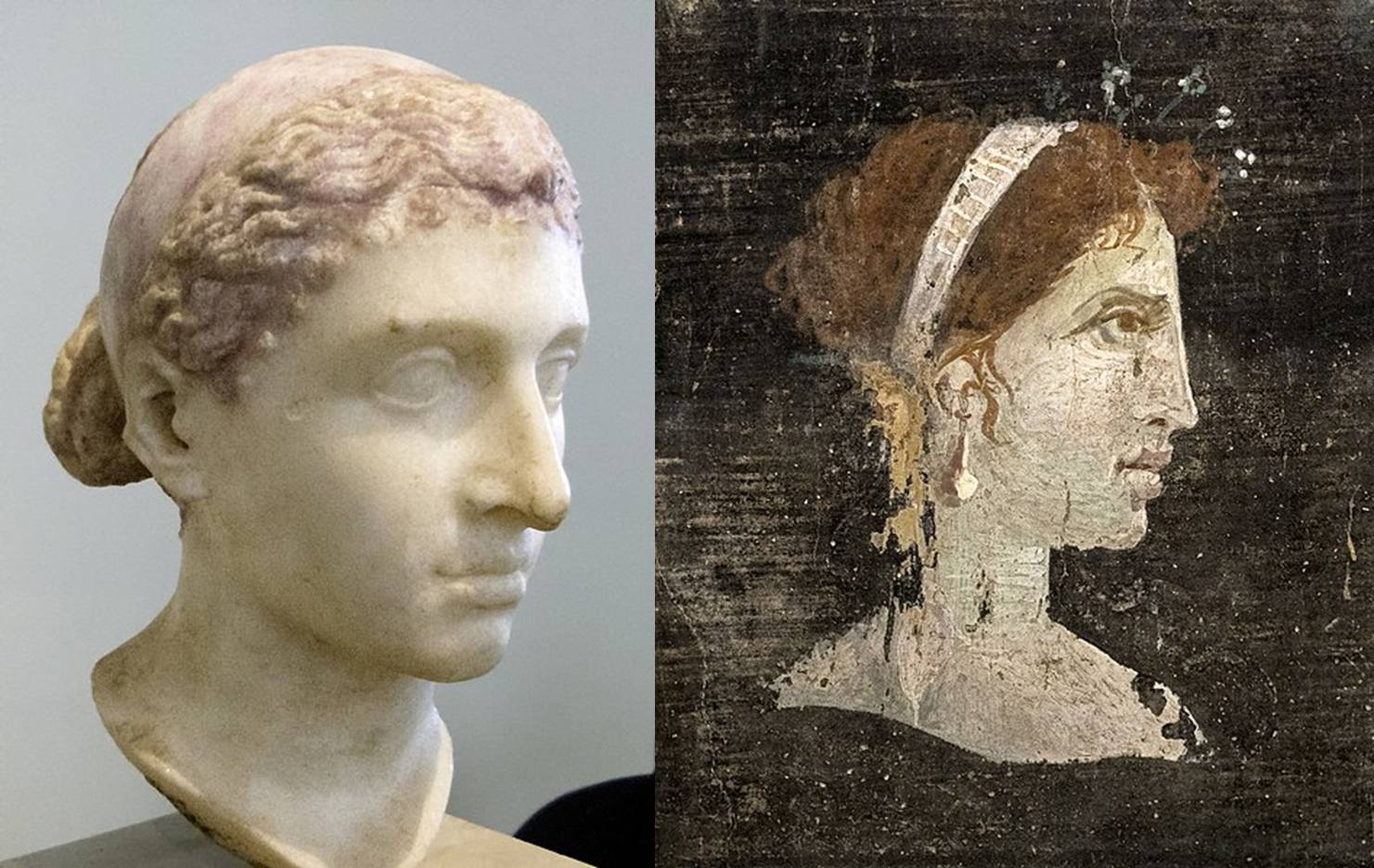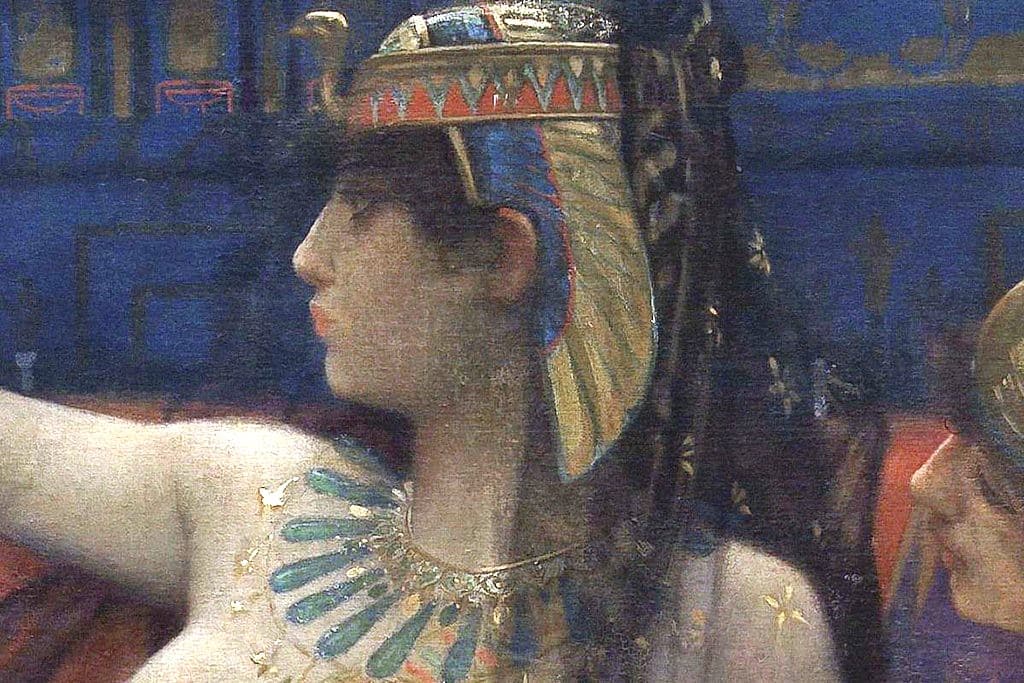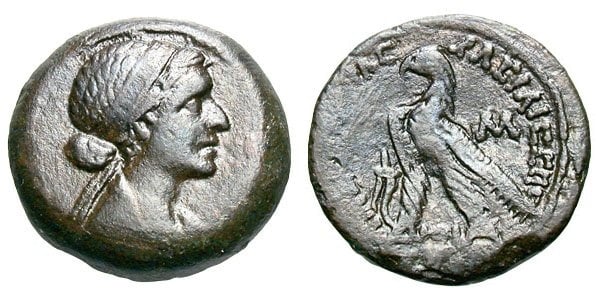
Given the recent controversy surrounding the depiction of Cleopatra VII Philopator as a black African woman in the Netflix documentary series Queen Cleopatra, the spotlight has again fallen on the physical appearance of this enigmatic and beguiling figure of history.
The question of Cleopatra’s appearance is not an entirely straightforward one. Some statues, busts, coins, and temple reliefs that depict the ancient Ptolemaic queen have survived, but these do not always portray her in a realistic manner, so a degree of caution must be exercised.
There are also some ancient literary sources to be drawn from, and certain inferences can be made by historians based on her lineage. Cleopatra was a member of the Ptolemaic dynasty, a royal family which ruled over Egypt, but was originally from Macedonia in Greece.
The challenges of reconstructing the appearance of Cleopatra
Before diving head-first into the available evidence, it is worth taking a moment to appreciate the challenges posed by the limited historical and archaeological record.
As noted by Enayat Mohamed Ahmed, a professor of Graeco-Roman Archaeology, and Wessam Fekry Ibrahim, a lecturer at Matrouh University, “images of Cleopatra VII are very rare.”
This is largely due to the fact that Octavian Augustus, the first Roman emperor, ordered that all images of the queen be destroyed after he triumphed over Cleopatra and her ally and lover Mark Anthony in 30 BC.
“In the case of Cleopatra, it is very difficult to know what she looked like in reality, or to find a clear and explicit source to classify her pictures,” write Ahmed and Ibrahim in the academic journal article, Hellenistic Heads of Queen Cleopatra VII.
However by combining a variety of literary, archaeological, and historical sources, we can describe the probable appearance of Cleopatra within a reasonable margin of error.

Heritage and family
Despite the current controversy surrounding Netflix’s depiction of Cleopatra, her ethnic background and ancestry are a good place to start in terms of identifying some of her probable physical traits. Thankfully, the historical record here is quite straightforward.
Cleopatra VII Phiopator (Greek: Κλεοπάτρα Φιλοπάτωρ) – Philopator meaning “Beloved of her father” – was a member of the Ptolemaic dynasty. The Ptolemies originated from Macedonia, an ancient Greek kingdom in northern Greece. Cleopatra was a descendant of Ptolemy I Soter, the founder of the dynasty and a former general of Alexander the Great. After Alexander’s death in 323 BC, Ptolemy I was able to secure a kingdom for himself in Egypt.

In terms of marriage, the Ptolemies were exceptionally insular. The family practiced a tradition of inbreeding and sibling marriage, which they appear to have adopted from earlier ruling Egyptian pharaonic dynasties.
When the Ptolemies did marry outside their own family, these marriages were typically made with members of the other Greek royal families who held dominion over the now fragmented parts of Alexander the Great’s empire.
Cleopatra had very few documented ancestors who were not of Greek descent. The most notable was through a previous marriage between the Ptolemies and the Seleucids, one of the other powerful Greek successor states.
This particular ancestor was her great-grandmother Cleopatra I of Syria. Cleopatra I’s father, Antiochus III, traced his lineage back to Apama, the Sogdian spouse of the Greek ruler Seleucus I Nicator, while her mother Laodice III had a mixed heritage of Greek and Persian ancestry.
There are a number of gaps in the Ptolemaic family tree, which adds further complexity. Cleopatra VII’s mother is presumed to be Cleopatra VI, but this is not known with certainty. It is therefore possible that Cleopatra VII’s mother could have come from anywhere in the Hellenistic world; although, given the pattern of Ptolemaic incest and occasional marriages with other Greek dynasties, the most likely explanation is that her mother was either another member of the Ptolemaic family or a Greek royal.
By examining her ancestry, historians can at least establish the most basic facts about Cleopatra’s physical appearance. That she would have looked Greek is widely accepted by the academic community.
Indeed, in response to the ongoing Netflix documentary, Dr. Mustafa Waziri, the Egyptian Secretary General of the Supreme Council of Archeology commented in a lengthy official statement that “Queen Cleopatra was light-skinned and [had] Hellenic (Greek) features.”
Literary evidence
Some of the ancient authors did describe the appearance of Cleopatra, albeit in relatively scant detail.
Cassius Dio (164 to c. 235 AD), an ancient Greek historian, described Cleopatra as “a woman of surpassing beauty,”
During the meeting between Julius Caesar and Cleopatra, Cassius Dio wrote that “Caesar, upon seeing her and hearing her speak a few words was so completely captivated,” that the Roman general acquiesced immediately to Cleopatra’s requests.
Cassius Dio referred to Cleopatra’s beauty several more times in the same passage. Although fascinating, this does not tell us much about any of Cleopatra’s specific physical traits other than her supposed beauty, which the historian would have based on older accounts since he was born after her death.

Plutarch (c.46 to c.119 AD) also briefly commented on Cleopatra’s appearance in his Life of Mark Anthony. Contrary to Cassius Dio, Plutarch did not reckon Cleopatra’s beauty to be particularly noteworthy but instead praised her intelligence and character.
“Her beauty, so we are told, was not itself outstanding; it did not immediately strike those who saw her; yet being with her had an inescapable hold; when talking with her, she was persuasive, and the character which surrounded her whole manner in company had a force to it,” wrote the Greek historian and philosopher.
Again, it is important to note that Plutarch was not a contemporary of Cleopatra and would have relied on earlier sources when writing his history.
Artistic depictions of Cleopatra

It stands to reason that the best evidence concerning the appearance of Cleopatra would be contemporaneous depictions of her.
Despite the aforementioned efforts of Octavian Augustus to destroy all surviving images of the Ptolemaic queen, some reliefs, statues, and busts of Cleopatra have survived. This was largely thanks to a friend of Cleopatra called Archibus, who bribed the Roman emperor with 2,000 talents to leave the remaining artworks intact.
According to the Egyptologist Joyce Tyldesley, representations of Cleopatra were composed in either the Hellenistic (Greek) or Egyptian artistic styles.
For the purposes of defining Cleopatra’s appearance, the Hellenistic depictions are of more help. As noted by archaeologist Bernard Andreae, the Hellenistic style was more naturalistic and realistic whereas the Egyptian style gave its subjects a more divine and symbolic appearance.
Concerning the three best-known Greek marble busts of Cleopatra, it is noted by Paul Edmund Stanwick that in each she is depicted wearing a diadem and has a melon hairstyle, which includes a middle-parted layer of hair at the front. Her hair is also tied into a bun at the back of the head in these depictions.
These marble busts, which date back to the mid-first century BC, also depict Cleopatra as having full lips, a short mouth, and wide open eyes, generally in keeping with depictions of other Ptolemaic rulers.
Coinage

The coins depicting the Ptolemaic queen were issued in two styles, according to the classicist Roland R. R. Smith. The first style was the flattering youthful depiction of the queen also observable on the busts of Cleopatra.
The second style presented Cleopatra in a less idealized light at an older age, with a thin neck and a hooked nose. These coins were minted at the time of Cleopatra’s alliance with Mark Anthony.
Cleopatra’s hooked aquiline nose, a feature associated with various peoples of the Mediterranean, seems to be a recurring motif, common across coinage and some paintings. Although a smaller nose is sometimes depicted on marble busts, the aquiline depiction is the version more commonly accepted by historians.
Whilst pondering Cleopatra’s mark on history, a French polymath once commented, “The nose of Cleopatra: had it been shorter, the face of the entire world would have been changed.”
See all the latest news from Greece and the world at Greekreporter.com. Contact our newsroom to report an update or send your story, photos and videos. Follow GR on Google News and subscribe here to our daily email!



